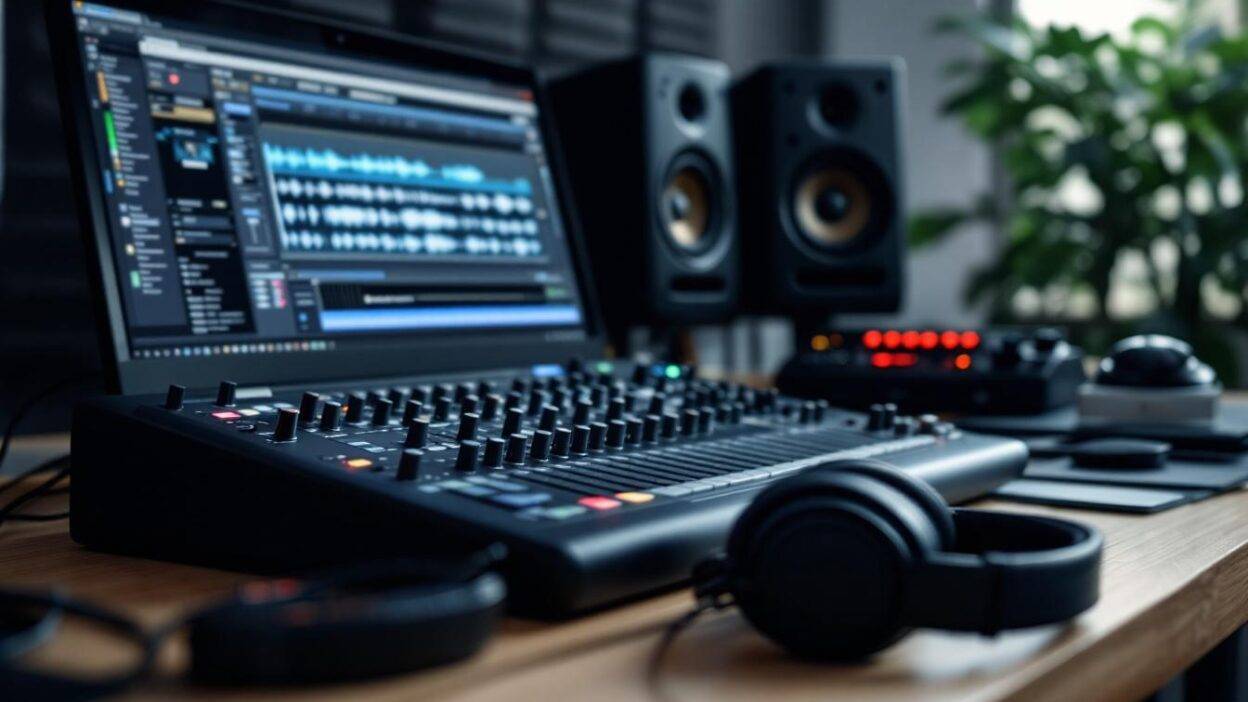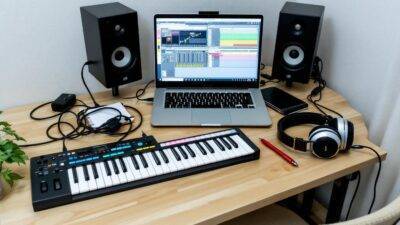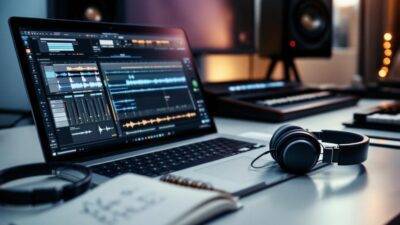Introduction: Your Music Journey Starts Here
Have you ever dreamed of making your own music but didn’t know where to start? Or maybe you’ve dabbled in music production but want to take your skills to the next level? No worries! This guide will walk you through everything—from picking the right tools to mastering professional techniques—so you can start creating tracks that sound amazing.
Step 1: Choosing Your DAW (Digital Audio Workstation)
Your DAW is your creative playground. It’s where you record, edit, mix, and bring your ideas to life. Choosing the right DAW depends on your workflow and preferences. Here are a few favorites:
- Ableton Live – Great for electronic music and live performances.
- FL Studio – Popular for its user-friendly interface and powerful MIDI capabilities.
- Logic Pro X – A go-to for Mac users, ideal for all genres.
- Pro Tools – Industry standard for professional mixing and recording.
Try a few demos before settling on one. The best DAW is the one that feels right to you!
Step 2: Setting Up Your Studio
You don’t need a million-dollar setup to make great music. Here’s what you’ll need:
- Audio Interface: Converts your analog sounds into digital. A good starting option is the Focusrite Scarlett series.
- MIDI Keyboard: Helps you play and record melodies more naturally.
- Studio Monitors or Headphones: You’ll want accurate sound to mix properly—KRK Rokits and Audio-Technica M50X are solid choices.
- Microphone: If you plan to record vocals, a condenser mic like the Audio-Technica AT2020 is a great pick.
Step 3: Understanding Sound Design & Synthesis
Sound design is where you create unique tones and textures. Think of it as painting with sound. Here are the basics:
- Oscillators: These generate raw waveforms (sine, square, saw, etc.).
- Filters: Shape your sound by cutting or boosting certain frequencies.
- Modulation: Add movement with LFOs and envelopes.
Play around with free synths like Vital or Surge to experiment and find your sound!
Step 4: Mastering Mixing & EQing
A well-mixed track ensures all elements sit nicely together. Here’s a simple approach:
- EQ Like a Chef: Think of EQ as seasoning—cut out muddy frequencies before boosting the good ones.
- Compression for Balance: Compression smooths out the volume differences and makes everything sit tighter.
- Reverb & Delay for Depth: Add space and atmosphere to your mix without drowning the sound.
Step 5: Learning Arrangement & Structure
A great melody isn’t enough; you need a solid song structure. Most tracks follow this format:
- Intro – Sets the mood
- Build-up – Creates anticipation
- Drop/Chorus – The high-energy part
- Breakdown – Gives the listener a breather
- Outro – Wraps things up smoothly
Listen to your favorite songs and analyze their structure—it’s the best way to learn!
Step 6: Mastering Your Track
Mastering gives your track that polished, radio-ready sound. Here’s what to focus on:
- EQ & Compression: Final touch-ups to balance the mix.
- Saturation & Harmonics: Adds warmth and character.
- Loudness Maximization: Ensures your track is competitively loud without distorting.
If you’re just starting, plugins like iZotope Ozone can make the process easier.
Final Thoughts: Keep Creating & Experimenting
Music production is a journey, not a destination. The best way to improve is to keep experimenting, learning, and most importantly, having fun! Whether you’re making beats in your bedroom or aiming for the charts, every track you create brings you one step closer to mastering your craft.
Got questions or need feedback on your tracks? Drop a comment below—we’d love to hear what you’re working on!



